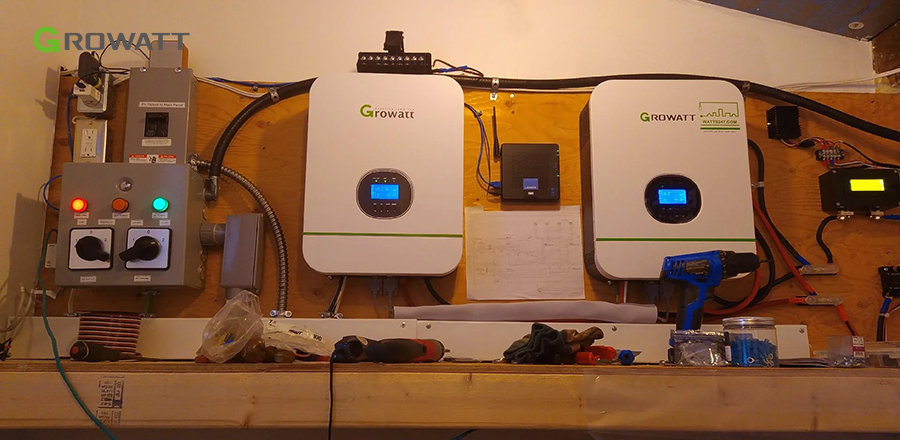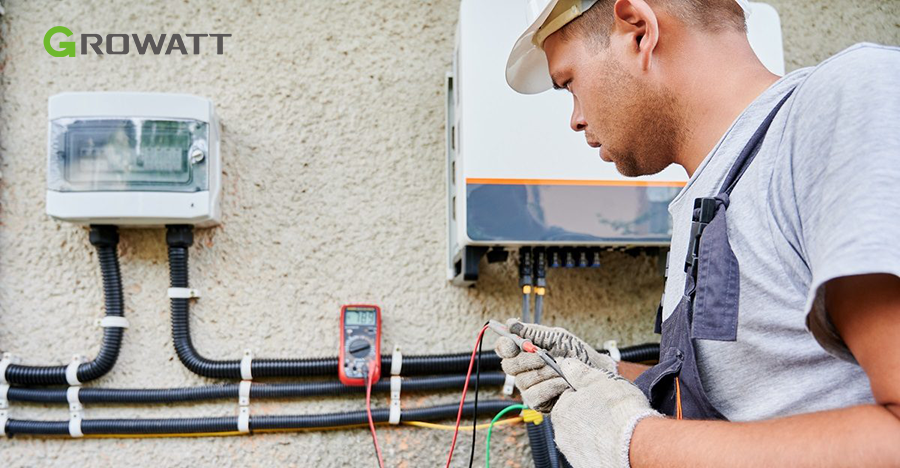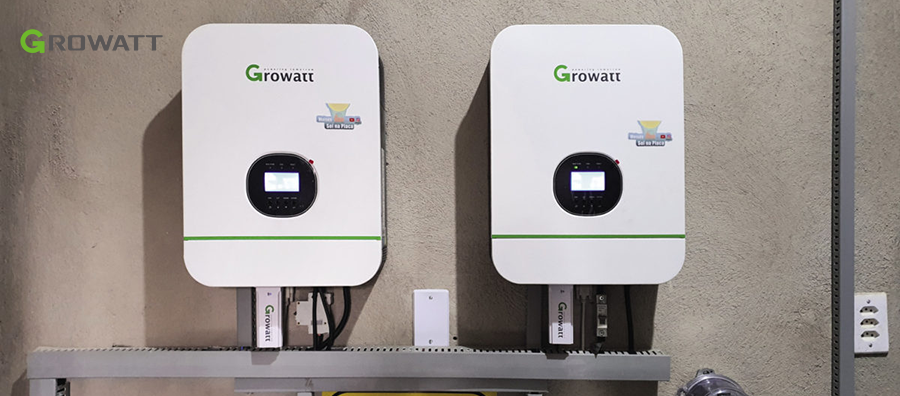When it comes to harnessing solar energy, Growatt inverters are a popular choice among homeowners and businesses. These devices play a crucial role in converting the direct current (DC) generated by solar panels into alternating current (AC) usable to power your home or feed back into the grid. However, like any mechanical or electronic equipment, Growatt inverters require periodic testing to ensure they’re functioning optimally. Growatt inverter test is essential for maximizing the efficiency and lifespan of your solar energy system.
In this comprehensive guide, we’ll walk you through the step-by-step process of testing your Growatt inverter, covering everything from the initial inspection to more advanced diagnostics. By the end of this article, you’ll have the knowledge and tools to keep your solar energy system running smoothly and save on energy costs.
The Importance of Regular Inverter Growatt Testing
Before we dive into the specifics of testing your Growatt inverter, it’s crucial to understand why this process is essential. Regular testing ensures that your solar energy system remains efficient and reliable. Here’s why it matters:
Performance Optimization: Over time, inverters may experience wear and tear. Testing helps identify potential issues that could hamper the system’s performance, allowing for timely maintenance.
Maximizing Energy Production: An optimally functioning inverter converts the maximum amount of DC power into AC power. Testing ensures that you’re getting the most out of your solar panels.
Preventing Costly Repairs: Early detection of problems can prevent them from escalating into costly repairs or replacements.
Safety Assurance: Ensuring your inverter operates safely protects your property and the grid from potential hazards.
Now, let’s move on to the steps for testing your Growatt inverter.
3 Steps for testing your Growatt inverter
1. Preliminary Checks
Before conducting a comprehensive test, start with some preliminary checks to ensure the safety and stability of your testing process.
Safety First: Ensure the inverter is disconnected from the grid and the solar panels to prevent electrical accidents.
Inspect for Damage: Visually inspect the inverter for any signs of physical damage or loose connections. If you spot any issues, address them before testing.
Check the display: Examine the inverter’s display for any error messages or warnings. Take note of any displayed codes.
Review the manual: Refer to the user manual provided by Growatt for specific instructions related to your inverter model.
2. Basic Functionality Test
Now, let’s proceed with a basic functionality test. This test will help you determine if your inverter is generating AC power from DC power efficiently.
Turn on the inverter. If it’s not already on, switch on the inverter.
Observe the display: The inverter’s display should show that it’s producing AC power. Ensure that there are no error messages or warnings displayed.
Monitor Voltage and Current: Use a multimeter to measure the output voltage and current. Compare these readings with the inverter’s specifications to verify their accuracy.
Check for Noise and Overheating: Listen for any unusual noises coming from the inverter. Also, touch the unit to check for overheating, which may indicate a problem.
Record Data: Keep a log of the voltage, current, and any unusual observations. This data will be useful for further analysis.
3. Advanced Diagnostics
For a more in-depth evaluation of your Growatt inverter’s performance, consider advanced diagnostic tests.
Data Monitoring: If your inverter is equipped with data monitoring capabilities, access this data. Check for trends, irregularities, or drops in power production over time.
Power Factor Test: Assess the power factor, which indicates how effectively your inverter converts DC to AC power. A lower power factor can lead to energy waste.
Harmonic Analysis: Use specialized equipment to perform a harmonic analysis of the AC power output. Excessive harmonics can affect the efficiency of your solar energy system.
Voltage and Frequency Stability: Ensure that the inverter maintains stable AC voltage and frequency, as fluctuations can damage sensitive electronics connected to the grid.
Thermal Imaging: Use thermal imaging equipment to identify hotspots or areas of overheating on the inverter. Overheating can lead to efficiency losses and even safety hazards.
Troubleshooting and Maintenance
If any issues or irregularities arise during testing, it’s essential to address them promptly.
Error Codes: Consult the user manual or manufacturer’s resources to interpret any error codes displayed on the inverter.
Contact a professional: If you’re unable to resolve issues on your own, consider contacting a professional technician who specializes in solar energy systems and inverters.
Regular Maintenance: Implement a schedule for routine maintenance to prevent problems from occurring in the first place. This can include cleaning, tightening connections, and updating firmware if applicable.
Warranty Consideration: Check your inverter’s warranty coverage. Many inverters have warranties that cover specific issues or failures, ensuring you don’t incur unexpected costs.
Monitoring and Software Tools
In addition to physical testing, you can make use of monitoring and software tools to keep a close eye on your Growatt inverter’s performance.
Online Monitoring: Many modern Growatt inverters come with online monitoring capabilities. You can access a web portal or mobile app to check real-time data, including power generation, efficiency, and any error alerts.
Third-Party Software: Several third-party software solutions are available for monitoring solar systems. These tools often provide more in-depth data analysis and can help you identify trends and irregularities.
Firmware Updates: Keep your inverter’s firmware up-to-date. Manufacturers release firmware updates to improve functionality, efficiency, and security. Regularly check for and apply updates as necessary.
Energy Consumption Analysis: Consider using energy consumption analysis tools that can help you understand how much energy your solar system is producing and how much you’re consuming. This data can be vital for optimizing your energy use.
Extending Inverter Lifespan
Proper maintenance can extend the lifespan of your Growatt inverter, ensuring you get the most out of your investment.
Clean Solar Panels: Keep your solar panels clean and free from debris. Dirty panels can reduce energy production and put additional stress on your inverter.
Check Wiring and Connections: Regularly inspect the wiring and connections. Loose or damaged wires can lead to inefficiencies or even system failures.
Environmental Considerations: Ensure that your inverter is installed in a well-ventilated, shaded area. High temperatures can affect its performance and longevity.
Surge Protection: Invest in surge protectors to safeguard your inverter from power surges and lightning strikes. These protective devices can prevent costly damage.
Regular Inspections: Schedule routine inspections by a qualified technician to catch and address potential issues before they become severe.
Troubleshooting Common Inverter Issues
While testing is crucial, understanding and troubleshooting common inverter issues is equally important. Here are some common problems and their solutions:
Overheating: If your inverter frequently overheats, ensure it’s adequately ventilated. If the problem persists, consider professional inspection and possible repairs.
No Output: If your inverter doesn’t produce AC power, check for loose connections or blown fuses. If these checks don’t resolve the issue, seek professional assistance.
Error Codes: Growatt inverter error codes as soon as they appear. Consult the manual to understand the issue, and if necessary, contact customer support. Growatt inverter error codes
Reduced Efficiency: If you notice a decrease in efficiency, it could be due to shading on your solar panels, dirt or debris, or issues with the inverter. Investigate and rectify these factors.
Sudden Shutdowns: Inverters may shut down due to grid instability or safety concerns. Check the grid connection and ensure it’s stable. If the problem persists, contact your utility provider.
Conclusion
Regularly testing your Growatt inverter is an essential aspect of maintaining a reliable and efficient solar energy system. By following the steps outlined in this guide, you can identify and address issues early, maximize energy production, and ensure the safety of your system. Remember to consult the manufacturer’s resources and, when in doubt, seek professional assistance. With proper testing and maintenance, your Growatt inverter will continue to serve you well, reducing your energy costs and your environmental footprint.




